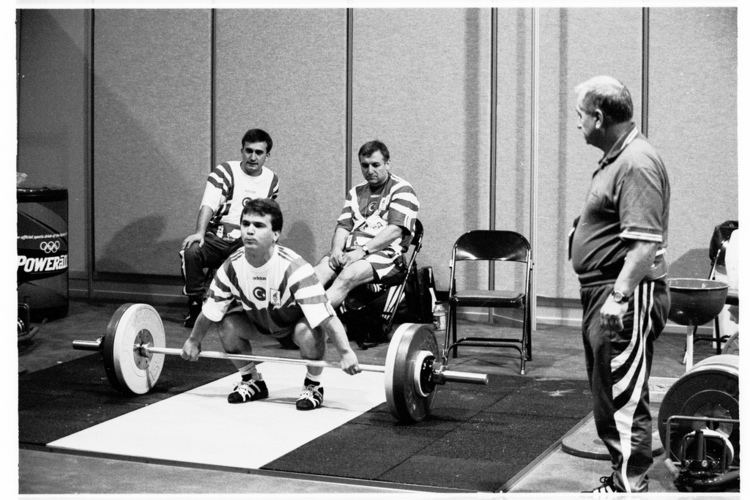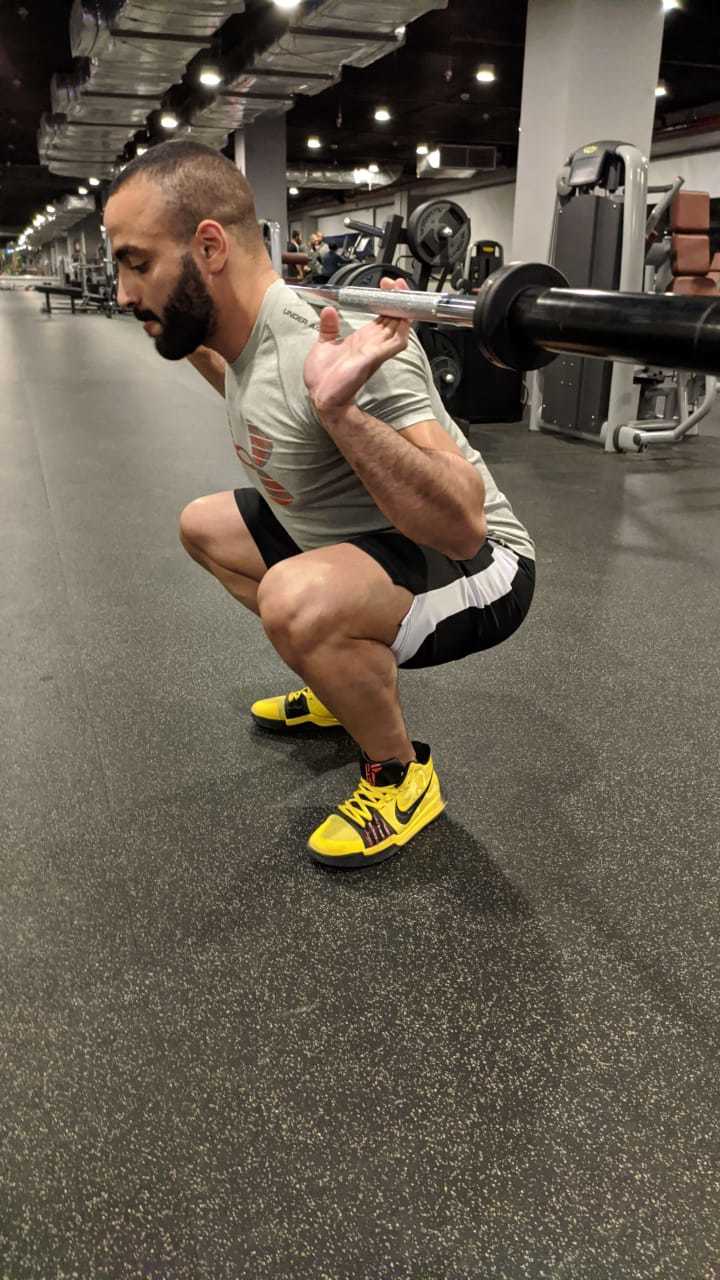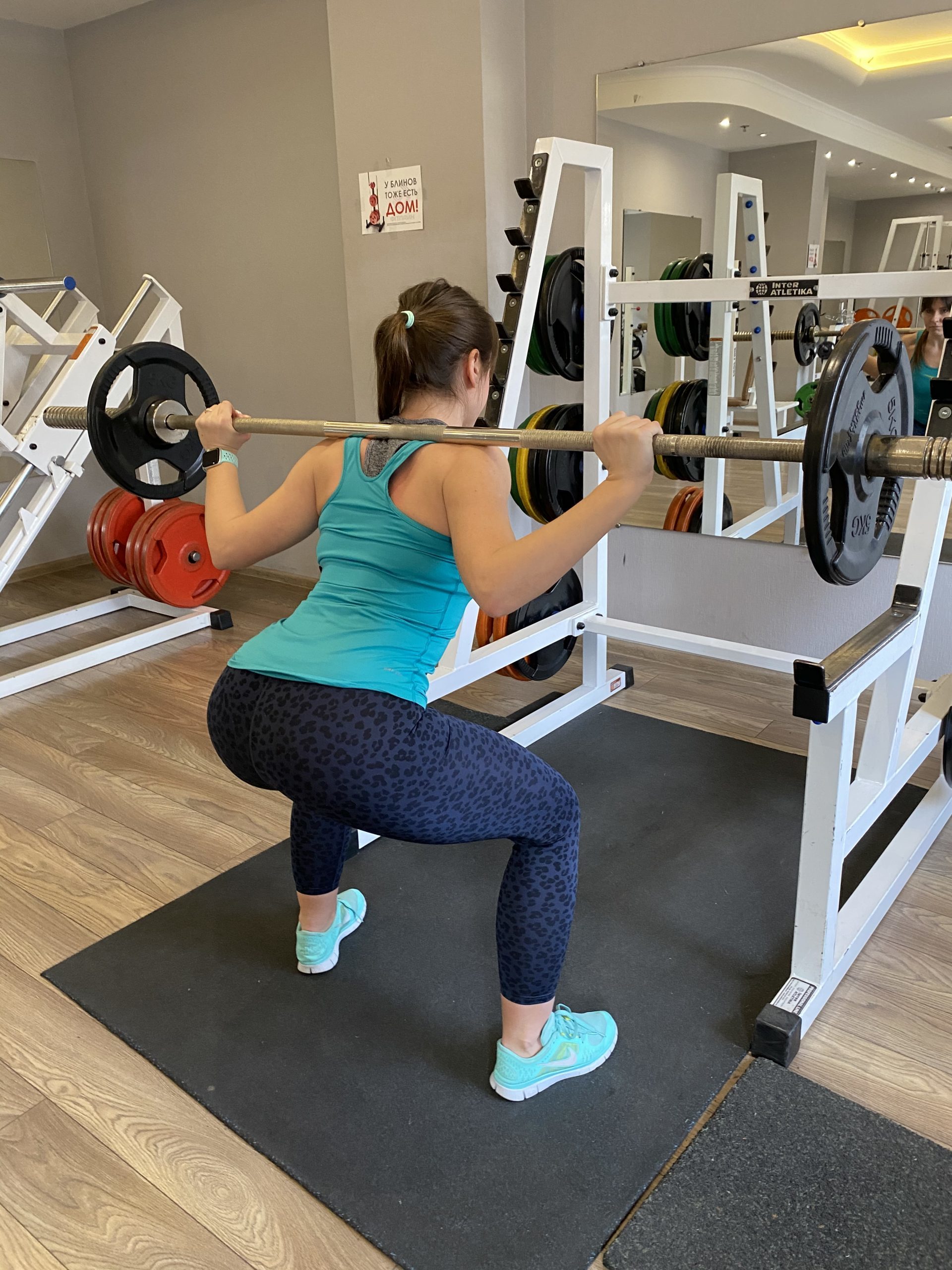Some links in this article are affiliate links, which means I earn from qualifying purchases.
Squatting every day sounds pretty intense.
Even dedicated gym goers don’t squat every single day.
Most trainers tend to squat between one to three times a week. However, there is benefit in squatting seven days a week.
Doing one exercise every day can be mentally and physically tough.
So what is squatting every day? Squatting every day involves squatting each day of the week. Also known as the Bulgarian Method. There are many benefits and reasons to squat every day. Some lifters use this grueling method to improve squat strength or squat technique.
The 8 benefits to squatting every day are:
Lets get on to the history of squatting every day and then we will go into reasons and further details.
Squatting Every Day: History and Reasons
So, what does squatting every day mean? It’s exactly what it says on the tin – it involves squatting every single day. Usually, these are back squats or front squats.
It’s a form of high frequency, high intensity, high specificity training. Squatting every day is great practice for powerlifting and weightlifters, but can confer benefits to everybody, trainer or not.
You may be wondering why somebody would choose to squat every day when many people get great results from doing it just a couple of times a week. The idea behind squatting every day is the consistency and high frequency style of training will stimulate beneficial muscle adaptations.
Let’s dive into the history of squatting every day and how this concept become popular.
History Of Squatting Every Day
Towards the end of the 20th century, a Bulgarian weightlifter called Ivan Abadjiev performed in the sport of Olympic weightlifting.
He won Bulgaria’s first weightlifting medal in 1957, starting him off on a string of successful wins up until the 2000s.
He became the head coach of the Bulgarian Weightlifting Federation and was nicknames ‘The Pope of Weightlifting’.
During his career, he produced 12 Olympic champions, 57 world champions and 64 European champions. He was elected as Coach of the Year of Bulgaria a total of six times.

Due to Abadjiev’s success, people became interested in his training techniques. His training preferences were to squat every day and use a limited number of exercises, such as the snatch, clean and jerk, and front squat.
Every exercise was performed as sets of one repetition. The idea was that the program followed the same pattern all year round, instead of being phased like most traditional workout programs.
Reasons Behind Squatting Every Day
Inspired by Abadjiev, more and more people began to believe in the benefits of squatting every day. The ideas behind this style of training are:
Science Behind Squatting Every Day
Any science-based evidence around squatting every day focuses on the benefits or drawbacks of high frequency training. Recent research has studied the effects of several training variables on strength gains [1].
These variables influence the success of a resistance training program.
Studies show that there is no correlation between frequency of training and strength gains when the overall training volume is the same [1].
In other words, frequency may not be the be all end all as long as the training volume is equated for combined multi-joint and isolation exercises.
Strength Related Gains
A 2013 meta-analysis on adults above 55 years old showed no differences in strength gains between training one, two, or three days a week.
This suggests that there are other training variables that contribute to development of strength such as training duration [2], intensity, time under tension, and rest in between sets [3].
Research has shown that muscle strength and lean tissue mass increases with both high and low frequency training and promoted muscular adaptation in well-trained participants [4].
However, one study showed that training frequency of four days or more a week resulted in larger strength gains than a frequency of less than four days [5].
Volume Training
Increasing training frequency allows you to increase the overall volume of your training.
Use of high frequency training produces higher pre to post training strength differences compared to low frequency training [6]. In addition, higher resistance training frequency leads to greater muscular strength gains.
A meta-analysis favored higher frequency training, with muscle strength increasing significantly between training programs frequenting one day or more than three days [7].
This was supported by findings from another study that indicated a graded dose-response relationship where muscle hypertrophy increased with increasing resistance training volume [8].
In conclusion, more research is required to back the science behind squatting every day and the benefits of training with high frequency.
However, the current research is pointing towards training frequency being a key factor in muscle growth and strength gains.
Squatting and Powerlifting Training
Although Abadjiev was primarily a weightlifting coach, his practices moved into powerlifting during the second decade of the 21st century.
Powerlifters began training with squats every day. They did not use their one rep maximum weight every day, but instead they focused on higher volume with a lighter load.
The average powerlifter today squats two times a week, but some powerlifting programs include squats every single day.
Powerlifting Squat Rules
Each powerlifting federation will have different, but similar rules and standards for squats. To do well with powerlifting, you need to have good squatting technique and you need to be able to squat deep enough.
There are a number of rules that are accepted across most federations.
The main rule to determine squat depth is that the top surface of the leg (the upper quads) must go lower than the top of the knee in every squat.
It can be difficult to determine the true depth of a squat, which makes objective judgement difficult in powerlifting competitions.
Further rules include:
8 Benefits to Squatting Every Day
1. Increases Overall Strength
Squats are compound exercises, meaning they target multiple muscle groups. These muscles include the gluteal muscles, quadriceps, and hamstrings.
Squats also target secondary muscles such as the core and spinal stabilizers, and even the upper body if you’re performing barbell back or front squats.
The squat therefore targets the whole body. It can be easily overloaded, meaning you can add more weight, reps, or sets to push your body further and gain strength.
2. Stimulates Leg Hypertrophy
Regularly practicing squats not only increases your strength, but it will also stimulate hypertrophy in the lower body muscles. Performing sets of squats between 8-12 reps will cause hypertrophy.
Alongside a number of other compound exercises such as hip thrusts, deadlifts, and lunges, squats produce a very high level of gluteus maximus activation (more than 60% maximal voluntary isometric contraction) [9].
3. Improves Squat Mobility
That old saying ‘practice makes perfect’ applies to squats. Practicing squats every day will inevitably improve your squatting technique simply because you are doing them more often.
Make sure not to consistently perform the squats will poor technique and work to perfect your form. As long as you focus on your form as you practice, you will improve.4. Practical Applications To Real Life
Squatting is a movement that we use in our daily lives. Whether that is to pick up a baby or a pet from the floor, to sweep the floor with a dustpan and brush, or to get something out of the bottom drawer, we use this movement so much without even realizing it.
This makes practicing squatting every day beneficial to your life outside of the gym. Once you start working on your squats consistently, you will see improvements in the way your body moves whilst you go about your day.
5. High Strength Transfer To Other Lifts
Squats increase total body strength and stimulate hypertrophy in a number of muscles. Both of these adaptations translate into other gym exercises.
For example, increasing strength and muscle size in the gluteal muscles will improve your performance in deadlifts or in hip thrusts. When you start squatting every day and increasing the load you use, you will notice that you can lift heavier in these other lifts too.

6. Enhances Muscle Motor Skills
Motor control is the interaction between the central nervous system and the musculoskeletal system to move and coordinate our bodies.
Believe it or not, squatting requires a large amount of motor control. You need to coordinate where every muscle is in relation to each other as we squat down.
Squatting every day will enhance your motor skills. Retraining key motor patterns by practicing daily will improve your form and help to prevent injuries.
7. Develops Mental Toughness
I have included this as both a benefit and a drawback because it depends on which way you look at it. If you enjoy challenging yourself physically and mentally, squatting every day will certainly challenge you to really push yourself.
Your body will get tired and you will want to give up, but if you persevere, you will start to see the benefits of squatting every day.
For a real mental and physical challenge, use Zercher Squats in your workout to keep things exciting.
8. Improves Bone Strength
Any form of weight bearing exercise contributes to stronger bones. Wolff’s law states that bones adapt to the stress that is put on them.
Squatting every day will increase the stress put on your bones, more so if you add extra weight. This stress improves bone metabolism and stimulates bone growth.
Drawbacks to Squatting Every Day
1. It's Mentally Taxing
If you love a mental challenge and want to push yourself to the limits, squatting every day will provide this challenge. However, for most of us, squatting even a few times a week is difficult.
Squatting every day is repetitive. It’s good to challenge yourself in your workouts, but you might find after a few weeks of daily squatting, you’re unmotivated and fed up!2. Squatting Every Day Is Physically Draining
Not only is squatting every day mentally taxing, but it’s also physically tiring. Too much of a good thing can be bad if you’re not careful. If your squats are weighted, you will start to fatigue pretty quickly if you squat every day.
This can stunt any muscle growth or throw your form off, increasing your risk of injury.
One study showed that men and women may have differences in fatigability.
The results showed that women have a quicker recovery rate on muscle fatigue than men after resistance training, suggesting that women may benefit more from higher frequency training than men [10].
3. Squats Require Good Mobility
To properly squat, you need to have a good level of mobility in your joints, particularly in your hips, knees, and ankles. All of these factors can affect your squat depth [11]. Lacking sufficient mobility whilst squatting every day can increase your risk of injury.
Having tight muscles around the joints limits you range of motion and if you don’t work on improving your mobility before attempting squats, you will not get very deep at all.
If you’re unsure whether your mobility is the issue or not, film yourself squatting. If your torso is leaning forward, your heels are coming off the ground, or you struggle to gain depth, these are signs that your mobility is holding you back.
Squatting every day will not improve your mobility in the absence of specific mobility work. Before you start and high frequency squatting program, I suggest loosening up your joints to prevent possible squatting-related injuries.
4. Lack Of Recovery Time
Your muscles need time to recover. This means resting and nourishing your body to replenish energy stores and repair damaged muscle. Squatting every day might not leave enough recovery time, leaving your sore, tight, and at risk of injuring yourself.
The required recovery time depends on if you use bodyweight or add extra weight. If you’re doing bodyweight squats, you won’t need as long to rest, so I suggest starting with no additional weight when you start squatting every day.
If you want to add extra weight, it will become harder to overload your squats because your muscles will not have time to fully recover between your workouts.
The American Council on Exercise recommends 48-72 hours of recovery between strength workouts. Squatting every day therefore does not leave adequate recovery time, and increases your risk of poor form and injury.
Who Should Squat Every Day?
Squatting every day is not for everyone.
Anybody who is looking to improve their squats should try squatting every day. It will allow you to improve your technique and depth. If you are an advanced lifter and can handle higher frequency training, you could benefit from squatting every day.
Those of you who hate squatting will be unlikely to enjoy squatting every day. If you lack decent mobility in your lower body, or are untrained, I suggest starting with a lower frequency first, and building up from there.
Squatting Every Day Programming
Depending on your goal, the way you program your squats will change the number of reps and load that you use.
The table below shows examples of a one-week program for two different goals. If your goal is to improve technique, focus on slower, controlled movements. For strength gain, focus on increasing the load and including heavy singles.

Goal | Improve your squatting technique | Improve your squat STRENGTH |
|---|---|---|
MONDAY | Back squat 3 x 5 50% 1RM | Back squat 3 x 3 60% 1RM |
TUESDAY | Box squat 3 x 3 70% 1RM | Back squat 3 x 1 90% 1RM |
WEDNESDAY | Pause back squat 3 x 2 60% 1RM | Back squat 3 x 3 70% 1RM |
THURSDAY | Back squat 3 x 5 50% 1RM | Back squat 3 x 3 60% 1RM |
FRIDAY | Box squat 3 x 3 70% 1RM | Back squat 3 x 1 90% 1RM |
SATURDAY | Pause back squat 3 x 2 60% 1RM | Back squat 3 x 3 70% 1RM |
SUNDAY | Slow tempo squats 3 x 3 50% 1RM | Back squat 3 x 1 90% 1RM |
Frequently Asked Questions
Is It Bad To Squat Every Day?
Studies have shown that low frequency training is more beneficial for those who are untrained or elderly. However, other studies suggest that high frequency training can contribute to increases in strength [1].
As I discussed above, there are a number of benefits and drawbacks to squatting every day. It depends on your current training abilities, and your preferences and goals.
Those who want to improve their squatting technique and motor control will benefit from squatting every day. However, if you have bad knees or poor mobility, squatting every day can put you at risk of injury.
What Will Happen If I Do 50 Squats Every Day?
Doing 50 bodyweight squats a day will make little difference to your muscle growth or strength gains. However, if you load the exercise, doing 50 heavy squats every day will certainly cause your muscles to grow.
Squatting 50 times a day will help you improve your form and technique. If you do all of the squats in one go, or in quick, successive sets of 10, your endurance and aerobic capacity will improve.
Remember that if you’re not used to squatting every day, you might start to feel sore and fatigued. This could affect your performance, compromise your form, and increase your risk of injury. In my experience, most people will experience fatigue after a week or two of consistently squatting every day.
Can 100 Squats A Day Make A Difference?
Doing 100 will not contribute to significant muscle growth unless you are overloading the exercise. Bodyweight squats can still provide benefits though. Squatting 100 times a day can help you stay consistent and stay active. It will also help you to focus on improving your technique balance, and stability.
If you’re doing 100 squats a day with a heavy load and correct form, you will see strength gains in the lower body. You can easily see muscle imbalances and work on them if you are training with such a high frequency.
How Do I Get Depth In My Squats?
Your ability to sit in a deep squat depends on a number of factors. Firstly, consistency in your training will lead to improvements in your squatting technique and form. You need to work on your motor control and spatial awareness so you stay balanced as you squat lower. To hit good depth in squats, you must have good mobility in your hips, knees, and ankles.
Final Thoughts
There isn’t a one size fits all with squatting. Some people will benefit from squatting every day, and others won’t.
It’s a tool you can use if you have certain goals and really want to focus on improving your squats. Studies show higher frequency training results in greater muscular strength gains, and squatting consistently every day will enhance your form and stability.
However, it is still unclear whether or not frequency alone has significant effects on muscular strength, and there is such a thing as overtraining. Squatting every day can lead to muscle soreness, tiredness, and increased risk of injury if you’re untrained or have poor form.
I would recommend avoiding squatting every day to most people who aren’t advanced lifters to avoid getting bored, fatigued, or injured.
DISCLAIMER: This article is for intended for educational purposes only and not as an individualized exercise prescription, therefore no one can be held liable in the occurrence of injuries, damages or monetary losses as a result of the information.
References
[1] Ralston GW. et al. Weekly Training Frequency Effects on Strength Gain: A Meta-Analysis. Sports Med Open. 2018 Dec; 4: 36. doi: 10.1186/s40798-018-0149-9.
[2] Silva NL. et al. Influence of strength training variables on strength gains in adults over 55 years-old: a meta-analysis of dose-response relationships. J Sci Med Sport. 2014;17(3):337–344. doi: 10.1016/j.jsams.2013.05.009.
[3] Borde R., Hortobagyi T., and Granacher U. Dose-Response Relationships of Resistance Training in Healthy Old Adults: A Systematic Review and Meta-Analysis. Sports Med. 2015 Dec;45(12):1693-720. doi: 10.1007/s40279-015-0385-9.
[4] Gomes GK. et al. High-Frequency Resistance Training Is Not More Effective Than Low-Frequency Resistance Training in Increasing Muscle Mass and Strength in Well-Trained Men. J Strength Cond Res. 2019 Jul;33 Suppl 1:S130-S139. doi: 10.1519/JSC.0000000000002559.
[5] Grgic J. et al. Effect of resistance training frequency on gains in muscular strength: a systematic review and meta-analysis. Sports Med. 2018;48(5):1207–1220. doi: 10.1007/s40279-018-0872-x.
[6] Ralston GW., et al. The Effect of Weekly Set Volume on Strength Gain: A Meta-Analysis. Sports Med. 2017 Dec;47(12):2585-2601. doi: 10.1007/s40279-017-0762-7.
[7] Schoenfeld B., Grgic J., and Krieger K. How many times per week should a muscle be trained to maximize muscle hypertrophy? A systematic review and meta-analysis of studies examining the effects of resistance training frequency. J Sports Sci. 2019 Jun; 37(11):1286-1295.doi: 10.1080/02640414.2018.1555906.
[8] Schoenfeld BJ., Ogborn D., Kireger JW. Dose-response relationship between weekly resistance training volume and increases in muscle mass: A systematic review and meta-analysis J Sports Sci. 2017 Jun;35(11):1073-1082. doi: 10.1080/02640414.2016.1210197.
[9] Neto WK. et al. Gluteus Maximus Activation during Common Strength and Hypertrophy Exercises: A Systematic Review. J Strength Cond Res. 2016 Jul;30(7):1805-12. doi: 10.1519/JSC.0000000000001272.
[10] Johsen E. and van den Tiilaar R. Effects of training frequency on muscular strength for trained men under volume matched conditions. PeerJ. 2021; 9: e10781.
[11] Kim SH. et al. Lower Extremity Strength and the Range of Motion in Relation to Squat Depth. J Hum Kinet. 2015 Mar 29; 45: 59–69.
About The Author

Athina Crilley is a Biochemistry graduate and a qualified health, nutrition, and recovery coach. She believes that health and fitness is a lifestyle and should be enjoyable. Athina currently works with online clients to achieve their goals and creates helpful and informative content online through her podcast and social media platforms. She has also written and published a book all about her struggles and recovery from an eating disorder called ‘Diaries of An Anorexic’.





